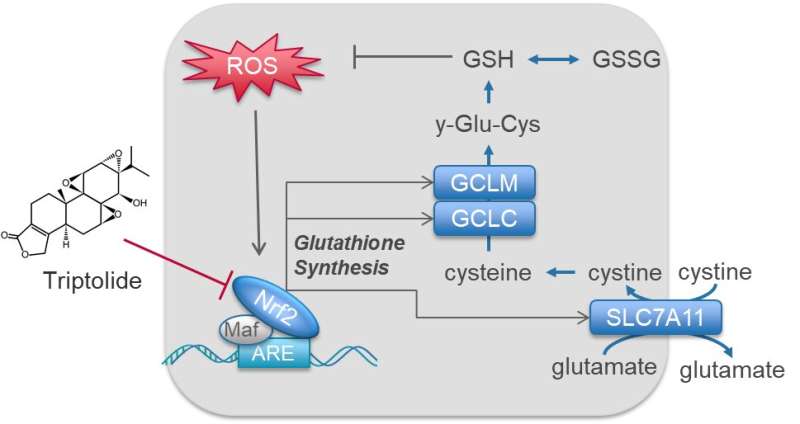New findings shed light on selective therapeutics for IDH1-mutated glioma

Findings of a new study led by Prof. Xu Guowang from the Dalian Institute of Chemical Physics (DICP) of the Chinese Academy of Sciences and Prof. Yang Chunzhang from the National Cancer Institute shed light on the selective therapeutics for IDH1-mutated glioma by targeting glutathione synthesis pathway.
The study was published in Proceedings of the National Academy of Sciences on Apr. 14. Glioma is the most common type of primary brain tumor. Isocitrate dehydrogenase I (IDH1) mutation is a cancer-associated mutation highly prevalent in patients with glioma.
Although the oncogenic role of IDH1 mutation has been shown in several human solid tumors, selective therapeutics for IDH1-mutated malignancies remain unavailable.
The researchers demonstrated that glutathione de novo synthesis plays an essential role in IDH1-mutated cancer cells. Glutathione synthesis was controlled by a transcription factor NF-E2-related factor 2 (Nrf2), which governs the gene expressions for antioxidative pathway.
"Our in vitro findings suggest that the disruption of Nrf2-driven glutathione synthesis pathway establishes synergistic lethality with a neomorphic IDH1 mutation, " said Prof. Xu.
Triptolide, a diterpenoid epoxide from Tripterygium wilfordii, served as a potent Nrf2 inhibitor. "Triptolide exhibited selective cytotoxicity to patient-derived IDH1-mutated glioma cells in vitro and in vivo. Furthermore, we studied the anticancer mechanism of triptolide." Yang said.
Mechanistically, triptolide compromised the expression of GCLC, GCLM, and SLC7A11, which disrupted glutathione metabolism and established synthetic lethality with reactive oxygen species (ROS) derived from IDH1 mutant neomorphic activity.
The study highlights triptolide as a valuable therapeutic approach for IDH1-mutated malignancies by targeting the Nrf2-driven glutathione synthesis pathway.
More information: Di Yu el al., "Triptolide suppresses IDH1-mutated malignancy via Nrf2-driven glutathione metabolism," PNAS (2020). www.pnas.org/cgi/doi/10.1073/pnas.1913633117

















